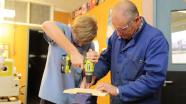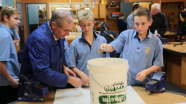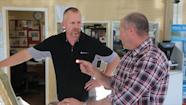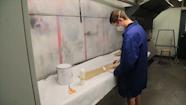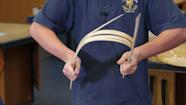Play, experiment, explore
Steve Andrew lets the students see, feel, and play with products to develop their understandings in materials. He brings products to the class and discusses them with the students and then the students start doing this too.
Duration: 02:55
Transcript
From my trade background I was involved in automotive, worked for General Motors for a while in Hamilton, so the materials side of things just come naturally. They kind of give me an interest and quite a good knowledge base about a lot of things that I could bring to teaching. And you know over the years I’ve probably introduced a lot of that stuff and I haven’t been afraid to approach it and have a go at it, and I think that’s really important.
One of the things that our school decided to do many years ago was to introduce technology using as many practical experiences we could for our students. They want to be able to feel things and touch things and play with things. Introducing the knowledge strand or the tech products component has been really good in that respect because there’s so many products and things around that we can look at and we can read and we can make decisions about.
I regularly talk to my boys about wheels because I believe that wheels are such a good product to think about. I bring in things regularly that I see. I bring in articles out of newspapers that I find, I bring in products that I’ll just find and I’ll think “oh that’s different”. Got a good connection with industry in the Waikato and they regularly open their doors to us to have a look and I generally scoop up a lot of stuff when I’m there. Whether it’s, you know, recycled plastic bags, eco-friendly plastic bags, right through to plastic injection moulders – stuff for examples that we use.
I also try and promote the students to bring stuff in as well, so that they can come in and talk about the stuff that they’ve found, and quite often they will say to me “Sir, I couldn’t bring it in but did you see that thing on TV?” or “Did you read that thing in the paper about such and such?”
These are my text books. These are the things that I like to teach my students. Sometimes they are directly related to the project that we’re producing, so it might be something to do with our weather stations and we might be looking at ways of catching the water. But other times it could be something that is not related to our project or the unit of work that we’re doing, it could be just something that I’ve found and that we want to talk about, and that we learn things about.
And they are always available in the workshop for the boys to pick up and play with. And once they’ve been around for a while I always, I generally leave them on the wall in my workshop so that they are still there to generate the thinking that we’re trying to produce in the workshop.
So just to reinforce those things that I’ve talked about, I think it’s really important that we use these existing products as a teaching tool because they are hands on for our boys, they are practical experiences. Whether it’s a bike or a lawnmower or a, just a simple handheld thing, they are really interested in it. They can see it, they can hold it, and it tells them a story and they like that.
Curriculum links
The structure of technology in the NZC
Steve talks about strands and components within the technology curriculum. Follow the links below to read more about these aspects of technology.
View a diagram showing the structure of the strands and components within technology:
Read more about the strands and components Steve has been focusing on:
- The technological practice strand
- The technological knowledge strand
- The technological products component
Indicators of progression and teacher guidance
The indicators of progression provide detailed information about what students need to be able to know and do in relation to the achievement objectives for technology. Teacher guidance for each component is given with the indicators.
Read the teacher guidance for levels one to three of the technological products component:
Reflective questions
- How do I build in opportunities for my students to feel, touch, and play with things?
- Do I regularly bring along items of technological interest to discuss, and do I encourage my students to do the same?
- Steve says that every existing product tells the students a story. How can I model for my students ways of “reading” these stories?
- Are my students familiar with the vocabulary of the technological products component? How can I support them to relate this vocabulary to the materials they work with?
Related resources
Resources
- Technological products and outcomes in food technology: In this teaching snapshot students develop understandings about food as a material.
- “Accidental Plastics”, Connected level 4, 2013: This article in Connected provides a great context for looking at what properties of plastics can be measured subjectively and measured objectively.
Technology in the news
You could use the following news items in exploring products and materials.
- 1942 "Time Capsule" Apartment Discovered in Paris: What materials were available in 1942?
- Hoki sparks nano-fibre revolution: How have the materials been manipulated to make the product?
Note that you can search the news section by using the keywords under each item.
More videos
Combining knowledge and practice
In this video Steve Andrew describes how focusing on technological products gives depth to technology teaching and learning at St John's.
Linking hands-on experiences and understandings
Terry Mitchell, Steve Andrew, and their students show how making whistles from aluminium and from plastic provides a great context for discussing the properties of materials.
Finding materials to meet the specs
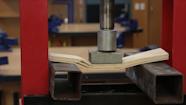

Steve Andrews shares how students identify material specifications in a brief and then test materials to find those that are suitable.
School–industry relationship cuts both ways
Steve Andrew and Terry Rillstone describe the way the relationship between St John's College and The Shop has benefits for them both.
Pushing the boundaries with materials
Steve Andrews describes how his senior students have the confidence to select and work with unfamiliar materials.
Exploring unfamiliar materials
Two year 12 students describe what they know about bamboo and how they are applying this knowledge to their projects.

